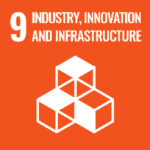Background
The Goodyear Tire and Rubber Company (“Goodyear”) is one of the largest tire-producing companies in the world and we have engaged with it on upstream and downstream climate-related risks since 2019.
More than 90% of greenhouse gas emissions related to Goodyear’s products and services are realised during the product-use phase, specifically due to fuel or energy use relating to tires, caused by design factors such as tire weight, rolling or acceleration resistance.¹
Although most of the company’s product Scope 3 emissions may be realised downstream, there is still significant climate upstream risk in purchased goods and services including rubber procurement. Recent technological developments have resulted in more sustainable materials found for use in tire production.
Our engagement
In 2019, we first communicated our expectations for Goodyear regarding its product upstream and downstream climate impacts. We also raised concerns regarding rubber sourcing and asked the company to undertake a risk assessment aligned with the Task Force on Climate-related Financial Disclosures (TCFD) recommendations, to which the company was receptive. Finally, we asked that the company set science‑based Scope 1 and 2 greenhouse gas emissions reduction targets.
In 2021, the company launched a CEO-sponsored climate strategy roadmap. The strategy aimed to expand the company’s overall climate ambitions and identify significant climate-related risks and opportunities impacting the company. The same year, the company confirmed leadership support to expand its overall climate ambition to include manageable Scope 3 emissions.
The company is working with its customers to reduce greenhouse gas emissions in its own operations and through more sustainable products.
The company also committed to reach net zero Scope 1, 2, and certain Scope 3 greenhouse gas emissions by 2050 as well as pursue Science Based Target initiative (SBTi) verification for those targets.
As of 2022, the company was working positively with its customers to reduce greenhouse gas emissions in its own operations and through more sustainable products. The company confirmed in our engagement its customers have reacted positively to its climate ambitions and renewable energy strategy which aims to move all manufacturing operations and processes to 100% renewable energy by 2040.²
The company had identified sustainable raw material options with low-carbon materials such as bio-based oils as alternatives to petroleum-based oil helping to meet its commitment to replace all petroleum-derived oils in its products by 2040.
The company acknowledged supply chain challenges and trade-offs in sourcing sustainable materials for the construction of renewable tyres. It is proactively considering carbon-neutral technologies in the rubber supply chain as well, including renewable alternatives such as soybean oil-based rubber. In our engagement, the company said it was building a team to focus on measuring Scope 3 emissions as well as product life‑cycle assessments (LCA).
The company was working positively with its customers to reduce greenhouse gas emissions in its own operations and through more sustainable products
Changes at the company
We welcomed the company’s inaugural TCFD report in March 2022, three years after we first engaged on this topic. The report provided an assessment of the potential climate physical and transitional risks on the business, including those associated with rubber sourcing, addressing our earlier concerns. With the release of Goodyear’s second TCFD report in 2023, we applauded the expanded disclosure and more in-depth climate analysis.
The company’s focus on reducing its value chain emissions through sourcing and producing more sustainable material tires has enabled it to set ambitious climate goals. In October 2023, the company achieved SBTi verification for its near- and long-term climate targets which included Scope 3 greenhouse gas emissions.³
The company has shown positive progress towards meeting its 2030 commitment to produce a 100% sustainable-material tire.
Over the course of our engagement have included the investigation of traditional recycling processes that provide acceptable tire properties beyond current applications, the beneficial reuse of tires and advanced mobility technologies to help customers reach their own emissions reduction goals.
The company has shown positive progress towards meeting its 2030 commitment to produce a 100% sustainable-material tire. In early 2023, the company unveiled a 90% sustainable-material content demonstration tire.4 The company confirmed that in addition to passing applicable regulatory testing, the tire tested to have lower rolling resistance when compared to a reference tire made with traditional materials; a positive step towards better fuel savings and a reduced carbon footprint.5
We applauded the expanded disclosure and more in-depth climate analysis.
The company does not own any rubber tree plantations, but we welcomed the actions Goodyear has taken as a purchaser of natural rubber. The company’s enterprise and affiliate natural rubber procurement policy is aligned with the Global Platform for Sustainable Natural Rubber‘s policy framework.6
In demonstrating its commitment to sustainable rubber sourcing, we appreciated that the company promotes responsible land use, production, and harvesting techniques, and performs regular audits to ensure compliance.










